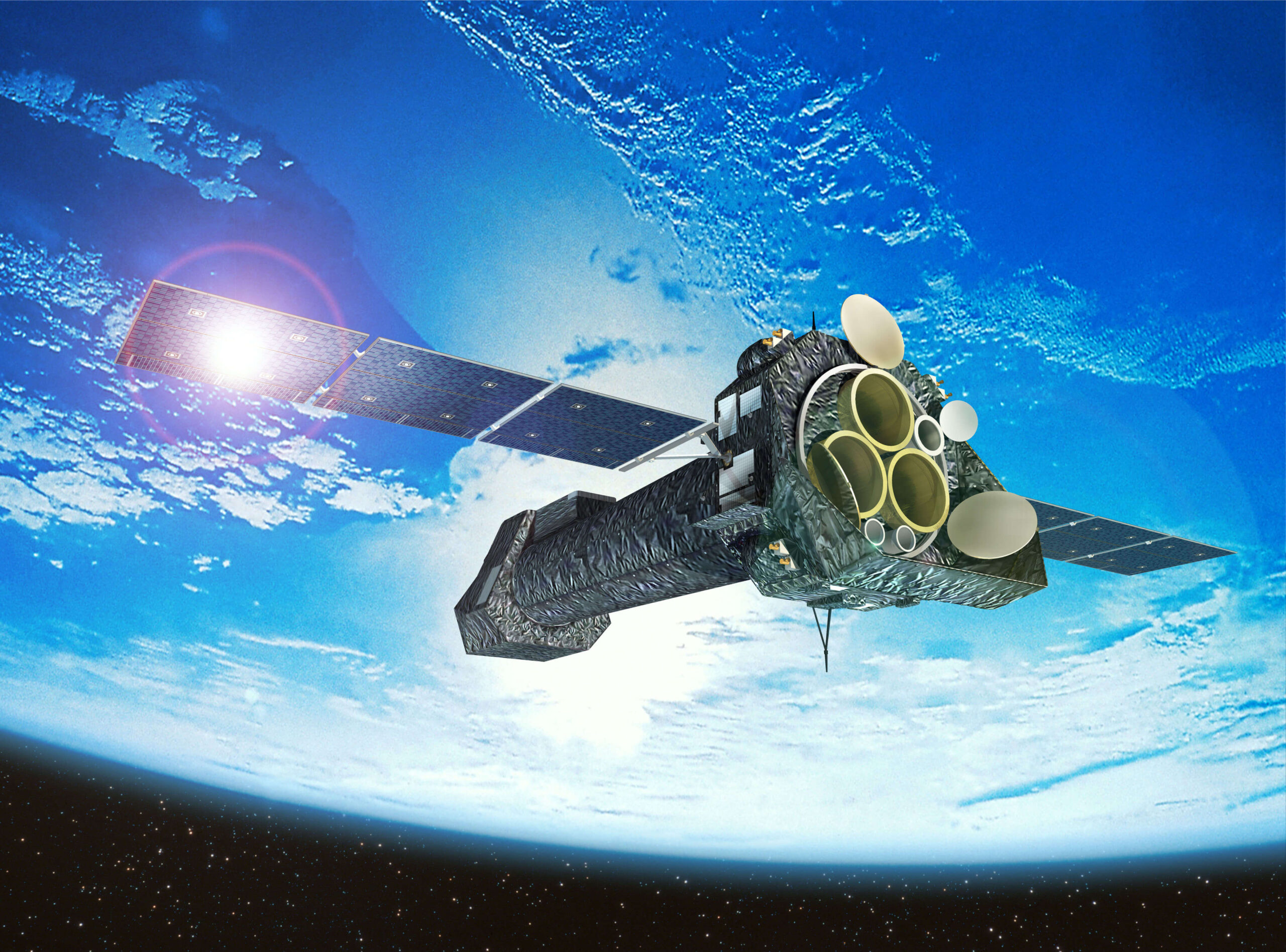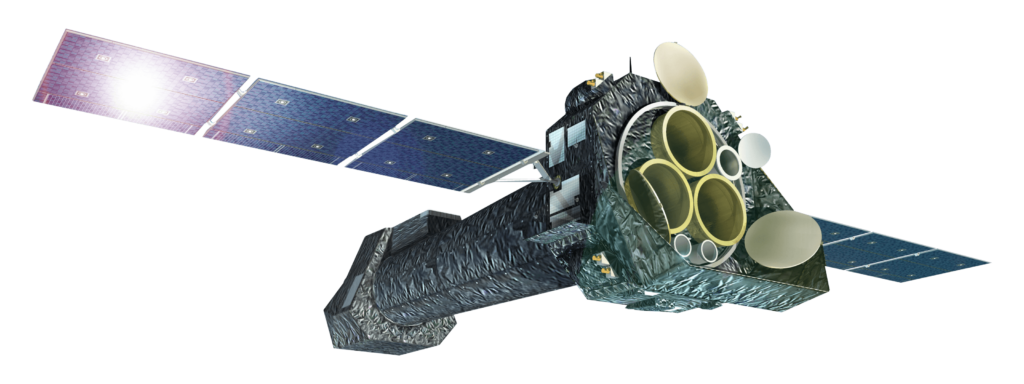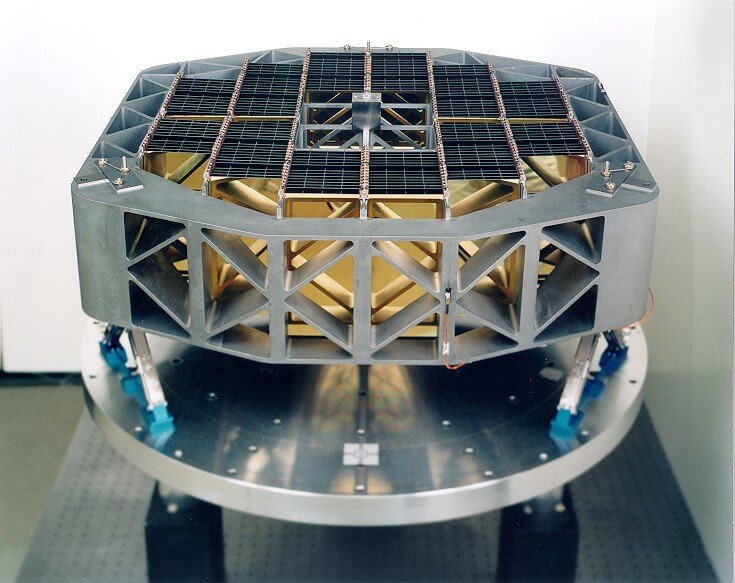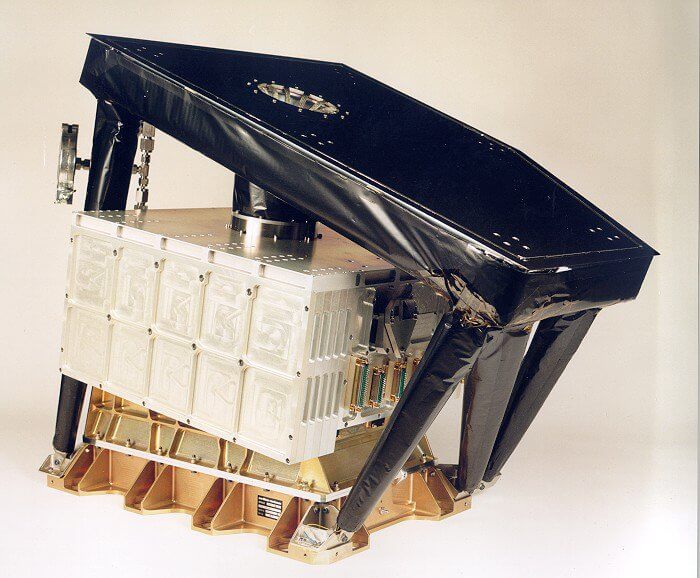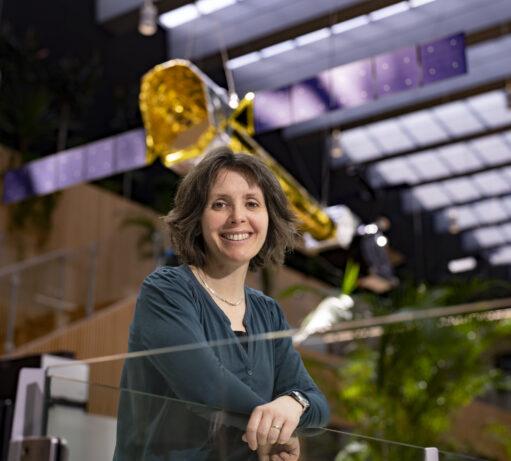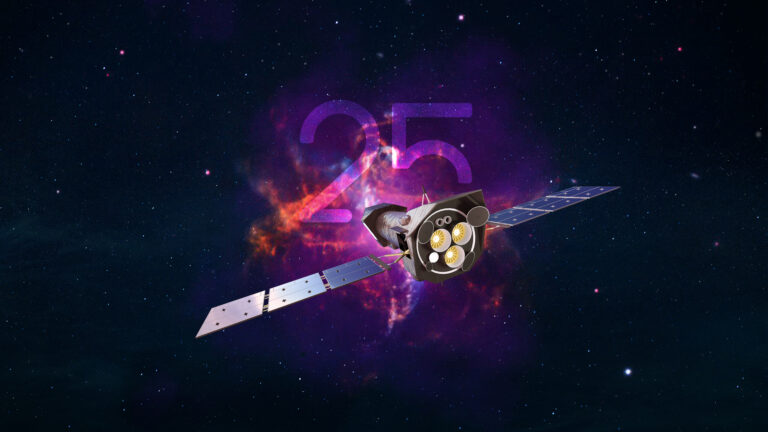| Launch | 1999 |
| Status | Active |
| Orbit | Geocentric, elliptical |
| Space agency | ESA |
| Type | X-ray, colour range of 0.5 – 3.5 nanometres (0.33 to 2.5 keV) |
| SRON contribution | Reflection Grating Spectrometer RG |
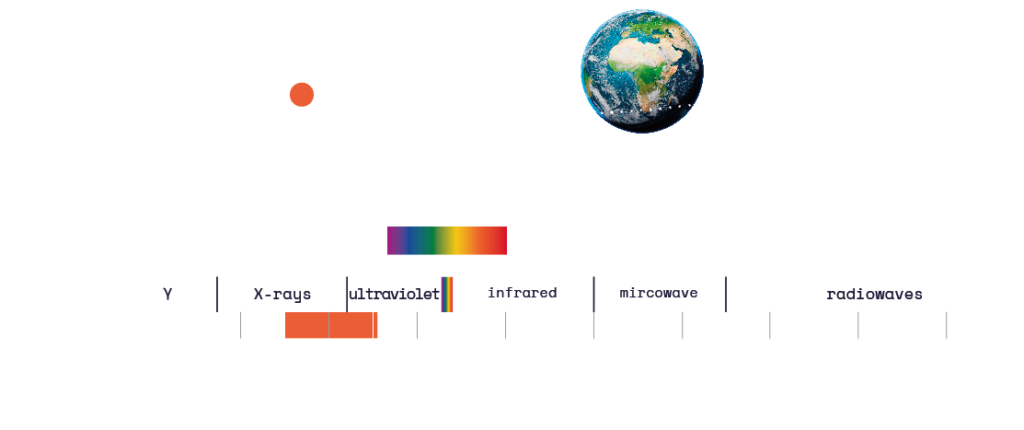
Science with the XMM-Newton X-ray spectrometer
X-ray telescope XMM-Newton (ESA) is designed so that astronomers can properly measure X-ray spectra with it. The spectrometers on board, made under the scientific leadership of SRON, thus allow XMM-Newton to properly investigate the state of hot gases and learn a lot about violent events in the universe.
By unravelling the X-ray light into different ‘colours’, astronomers can learn much more about an object than can be seen in a photograph. Because atoms in hot gases emit or absorb light in very specific colours, astronomers can see the composition, temperature and pressure of the gas. These are very important properties for understanding the physics of objects in space.
Before gas falls into black holes, it spins in a kind of vortex towards the black hole and becomes millions of degrees hot. A combination of heat and magnetic fields blow some of the gas back into space. The vortex is too far away to see in a photograph, but in the spectrum we can see that the gas in the wind blocks some of the bright light from the vortex. The lines in the spectrum even reveal what the gas is made of and how hard it is blowing. By looking at how the spectrum changes over time, astronomers can still build up a picture of what happens there.
Normal stars also emit X-ray radiation, just like the sun. That radiation comes mainly from the corona. This is the sun’s hot atmosphere, which can be seen as a white halo during a solar eclipse. With XMM-Newton’s spectrometers, the coronas of other stars can be seen, so we can learn if the atmospheres of stars are very different. When a star explodes at the end of its life, XMM-Newton allows us to see the shock waves and hot gas blowing through space after the explosion.
On the grand scale of the universe, XMM-Newton sees the hot gas in clusters of galaxies. These large groups of galaxies, each consisting of billions of stars, are embedded in a hot cloud of gas visible in X-rays. In some clusters, we see strong jets from a large black hole at the centre blowing bubbles into the surrounding gas. It is an example of how black holes influence the evolution of galaxies and clusters. Together with measurements of the composition of the gas, astronomers can learn more about how the cluster formed in the past.
After decades, the XMM-Newton X-ray telescope is still in high demand. Astronomers have now made observations with XMM-Newton that have influenced astronomy in many ways.
Together with the Chandra telescope (NASA), which can take sharper pictures, XMM-Newton has provided more overview and detail in the dynamics of the hot universe. Successor missions are XRISM and NewAthena.
XMM-Newton’s Reflection Grating Spectrometers
To measure the X-ray spectrum of hot objects in the universe, ESA’s XMM Newton has two special reflection grating spectrometers on board, built under the leadership of SRON. These Reflection Grating Spectrometers (RGS), share telescope mirrors with two MOS cameras. Thus, a picture and a spectrum are recorded simultaneously.
The RGS spectrometer consists of reflection gratings placed behind the telescope mirrors, where about half of the light bounces to a series of CCD detector strips. There, the light – meanwhile blown apart by the grating like a rainbow – forms an X-ray spectrum on the array of CCDs that capture it. Since the other half of the X-ray light beam passes through to the MOS cameras, this allows a picture and a spectrum to be taken simultaneously from one light beam.
Dutch spectrometer on X-ray telescope XMM-Newton
SRON as Principal Investigator (PI) is responsible for these RGS spectrometers. Both the gratings and the CCDs were developed and built in collaboration with other organisations in Europe and the United States. SRON built the two CCD strip X-ray cameras for the RGS and ensured that they work optimally with the gratings.
SRON astronomers help calibrate the instrument all the time as long as it remains in use. After all the years in space, the number of small damages in the instrument slowly increases. By regularly looking at the same objects, we can correct for these damages.
A gold reflectance ray with 600 grooves per millimetre
The RGS contains 182 reflection gratings measuring 10 by 20 centimetres, made of a 0.2 micrometre thick gold layer on a silicon carbide support. Such a reflection lattice is a mirror with microscopic grooves in it. Each grating has about 600 of these grooves per millimetre. The grooves cause the X-ray light to fan out in a rainbow. You can compare it to how a compact disc splits light into rainbow colours.
The gratings are very precisely fixed in a frame of berillium that hangs directly behind the mirrors. There, they reflect ‘their’ half of the X-ray beam to RGS’s spectrum camera. Each colour in its own spot, just as the rainbow unravels sunlight into colours in a row.
To reduce background noise in the CCD detectors, the instrument is cooled via a heat sink on the outside of the satellite. This dissipates the generated heat.
The ESA website has more technical details about the telescope and instruments.
In short, the RGS at XMM-Newton will enable scientists to study the state of hot gases in the universe, raising questions about black holes, star explosions and super-hot gas flows.



